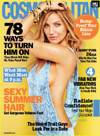Press/Reviews
![]() The New Science-y Dating Solution
The New Science-y Dating Solution
 Scientific American Mind – Cover Story
Scientific American Mind – Cover Story
![]() La Repubblica (Italy’s 2nd largest daily newspaper)
La Repubblica (Italy’s 2nd largest daily newspaper)
![]() SaberViver – Cover story (Portugal’s leading health and psychology magazine)
SaberViver – Cover story (Portugal’s leading health and psychology magazine)
KIRKUS:
“There is a scientific theory behind the ways we approach and develop adult relationships, write neuroscientist Levine and social psychologist Heller, and understanding how it works will help you find the right mate—or improve your existing partnership.
Adult attachment theory, which was pioneered in the 1950s by British psychoanalyst John Bowlby, posits that human beings are genetically predisposed toward coupling, and that a secure partnership is essential to our emotional and physical well-being. According to the authors, we all have a particular “attachment style” that governs our actions and attitudes toward romantic interaction. The ideal, and most prevalent, attachment style is “secure.” A person with a secure style feels that his partner provides a loving and supportive “secure base,” and that he can provide that same emotional security in return. The authors suggest that human beings are by nature social creatures, and that even when we crave independence, it’s the presence of a secure partner that allows us to explore the world on our own—this is called the “dependency paradox.” The other two attachment styles, “anxious” and “avoidant,” are the major focus of this book. In clear terms, Levine and Heller explain how we can diagnose our attachment style and what steps can be taken to combat its negative effects. For example, someone with an anxious attachment style has a different view toward intimacy and communication (anxious types tend to obsess over relationships and worry about their affection being reciprocated) than someone with an avoidant attachment style (who tend to minimize closeness and undermine emotional connection). The analysis of each attachment style is accompanied by a set of behavior patterns and real-life anecdotes to provide the reader with relatable social context. The authors write that, despite one’s age or experience, change is possible, and with the right mind-set, even those who feel defeated by dating—or are stuck in an unsatisfying relationship—can find a solid partnership.
A practical, enjoyable guide to forming rewarding romantic relationships.”
NEW AGE RETAILER:
“The psychological concept of Attachment Theory has been gaining prominence over the last few decades. About two decades ago it was finally applied to adult relationships. These authors, a neuroscientist and an educational psychologist, have put it all into layman’s terms and created guidelines to help readers manage their relationships more successfully. Their major premises are deceptively simple: the need for closeness/dependency is biological; there are three modes of human attachment; people interact more or less easily, based on how compatible their modes of attachment are. This is real science not slickly packaged personal opinion. The theories are clearly explained using lots of examples. There is advice for avoiding unhappy pairings and for getting out of relationships that are doomed to repetitive, negative interaction. The last section deals in depth with communicating effectively and resolving conflict. This one could save your customers a fortune in therapy bills. It also gives them permission to pursue healthy, comfortable relationships.”
PUBLISHERS WEEKLY:
According to psychiatrist and neuroscientist Levine and social psychologist Heller, one’s adult romantic partnerships have patterns similar to those one has as a child with one’s parents. Our individual attachment styles are thus, they conclude, hardwired into our brains. Focusing on three main attachment styles (secure, anxious, and avoidant), the authors explain the biological facts behind our relationship needs, teach readers how to identify their own and loved ones’ attachment styles, and warn of the emotional price of connecting with someone with drastically different intimacy needs. Teaching readers communication skills to breach these differences, the authors stress that people have very different capacities for intimacy, and that partners must ensure each other’s emotional well-being. Chock-full of tips, questionnaires, and case studies, this is a solidly researched and intriguing approach to the perennial trials of “looking for love in all the right places” and improving existing relationships.




 Cosmopolitan June 2011
Cosmopolitan June 2011 Dr. Laura Berman show (audio)
Dr. Laura Berman show (audio) JDate (JMag)
JDate (JMag)
